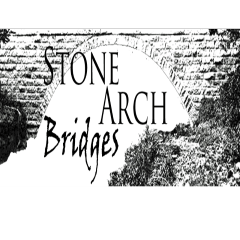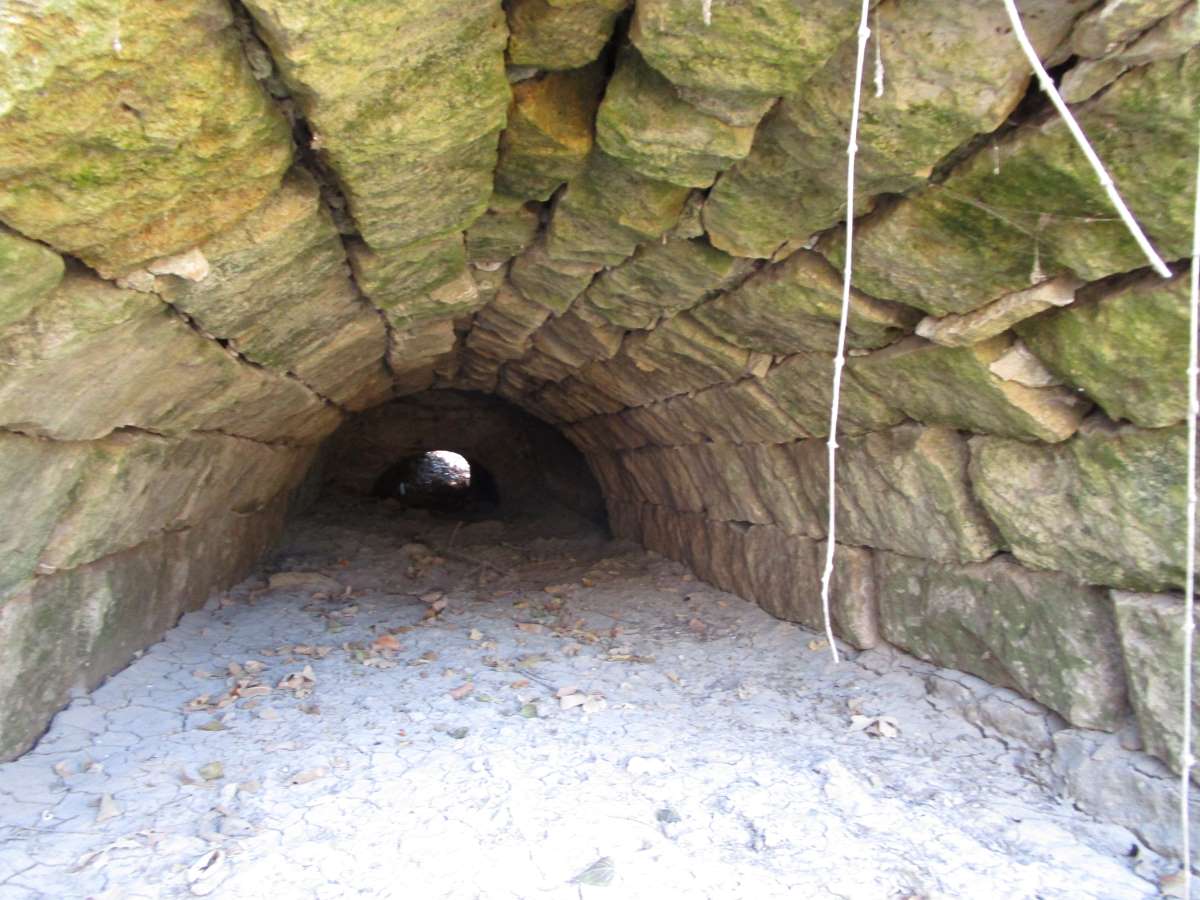The arch constructed of rubble masonry is a durable structure, and yet is surprisingly easy to build. Arches of rubble masonry were historically quite commonly built from about medieval times (and even a hair earlier) right up towards the end of the stone arch bridge era. Interestingly, arches constructed of ashlar masonry dominated at the beginning of the stone bridge era (Roman bridges) and at the end, culminating in the spectacular railroad stone arch bridges.
The Basics of the Rubble Arch
Like most rubble masonry, the classic rubble arch generally consists of largely uncut stones that have been selected for a good fit. So, the tapered end of the stones are placed down, usually in a shallow bed of mortar at the tips. Once the stones are laid, a grout is poured into all the joints and then stone shards, gravel, etc. are poured into the joints. These stone fragments hold the arch, eliminating a complete reliance on mortar. For more detailed information on building rubble arches of all kinds, see Building Rubble Arches. It is possible to build a rubble arch without mortar, but this requires more care in selection, perhaps a little more trimming, and a lot more shimming.

Still, old mortarless rubble arches can be found in stone bridges, especially in the New England area of the United States.
The Strengths of a Rubble Arch
The rubble arch can be surprisingly strong. Whereas ashlar masonry relies on precision-cut blocks of stone, the very fact that rubble arches are largely uncut gives them a certain strength. The stones in an ashlar arch tend to be cut to a template regardless of the stone’s natural characteristics, while in a rubble arch the stones are chosen to fit based on their natural strengths. Thus, the stones in a quality rubble arch tend to be stronger than their ashlar counterparts. Also, the intricate way quality rubble masonry locks together can give it an impressive strength. These strengths of rubble masonry were not lost even on some of the experts alive at the end of the stone arch bridge era. Furthermore, the rubble arch would appear to be a rather adaptable structure, capable of reshaping itself considerably without the risk of failure; the stone shims frequently used in the arch tend to sift around with settlement, re-wedging the arch to its new position, at least within reason. On the other hand, an ashlar arch tends to settle in a fashion leaving gaps between stones, unless the stones crush down under the increased point loads.
A Peculiarity of Rubble Arches
Rubble arches have one peculiarity that is very pertinent to load-rating such structures. Though there is extensive debate over the best way to rate a stone arch bridge, one possibility that has been floated is based on hinging mechanisms. The idea is that under load the forces may reach the edge of the arch, creating so-called hinges; these hinges are points where the pressure opens up joints in an arch. As long as no more than three such points are opened, the arch can be stable. Add a fourth, and the arch now is a flexible mechanism liable to collapse. Assuming we have only up to three hinges, they will close again once the load is removed. The idea is by accepting hinges (a symptom of tension in the arch, by the way) we can increase the weight limit of a stone bridge. It is also pointed out that many steel and concrete arches are deliberately built with up to three hinge points (literal, oversized, flexible hinges, actually) in them. While we can debate the pros and cons of this method of rating stone bridges it would seem the development of hinges can potentially compromise a rubble arch at least, based on one of the virtues of rubble arches mentioned above.
Consider how a rubble arch is built. You will notice that stone chips and fragments are used to help hold the angles. When hinges develop, the fragments will tend to fall out if the opening is located on the underside of the arch. If the hinges are located on the upper part of the arch, the stone fragments will tend to fall into the joints further. Based on these facts and empirical observation of rubble arch behavior, we find that the shifting of stone fragments tends to hold the arch in its new, distorted shape after the load is lifted. Now granted, allowable hinges are generally quite small, but the question is, wouldn’t it seem that there is some risk of the arch failing over a long period of heavy loads causing hinges in turn causing the stone fragments to migrate, in tiny amounts at a time? This phenomenon would naturally be most applicable in mortarless bridges, or mortared bridges where the mortar has leached out. At any rate, it is something to consider.
The Variety Within a Rubble Arch
Probably the main reason the rubble arch was often frowned on in more recent years is because its characteristics tend to be far more variable than the ashlar equivalents; after all, bridges made of stones cut into precision, templated, oversized bricks are consistent, creating a feeling of stability and predictability. Rubble arches show far more variety in their characteristics, and are much more dependent on the skill of the mason’s art, and can hardly be molded to the same pattern.


In fact, even if the same mason built a “duplicate” rubble stone bridge using the same arch forms and everything, one look will show that the structures are different. And it is true a poor-quality rubble arch relies rather heavily on mortar for stability, potentially leading to long-term problems. And yet, rubble arches work with the stone, while an ashlar arch forces the stones into the same mold. Nor is it that hard to build a quality structure.
Conclusion
Just because the rubble arch expresses a wide variety in characteristics does not mean it is unstable or even an inferior structure; after all, many medieval bridges made of rubble masonry are still used hundreds of years later. Based on observation, the longevity of a stone arch bridge seems to be more of a reflection on the engineering characteristics such as waterway and road width more than on the class of masonry used, provided the masonry is at least fair quality. And, at any rate, the rubble arch is still a great choice for the DIY enthusiast, for such a structure can be made that is simple to construct and can last hundreds of years.

